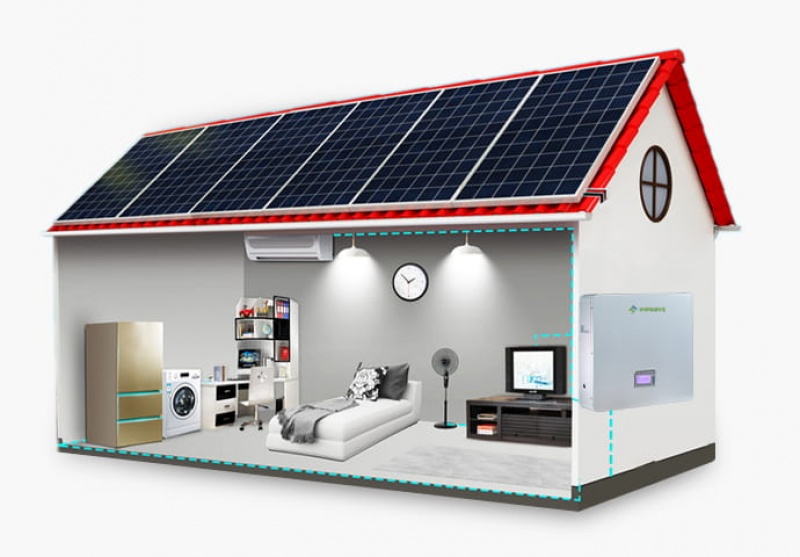A home energy storage system is designed to store and manage electrical energy, typically generated from renewable sources like solar panels or wind turbines, as well as from the grid during off-peak hours. The structure of a home energy storage system generally includes the following components:
- Battery Storage: The heart of the system is the battery, which stores electrical energy for later use. Lithium-ion batteries are commonly used due to their high energy density and efficiency. The battery capacity is chosen based on the homeowner’s energy needs.
- Battery Management System (BMS): The BMS monitors and manages the battery’s state of charge, voltage, temperature, and overall health. It ensures the safe and efficient operation of the battery.
- Inverter: An inverter is essential to convert the direct current (DC) electricity stored in the battery into alternating current (AC) electricity that can be used to power household appliances. In some systems, this inverter may also perform grid-tie functions, enabling the system to interact with the utility grid.
- Charge Controller: If the energy storage system is connected to solar panels or other renewable energy sources, a charge controller is used to regulate the charging of the battery. It prevents overcharging and over-discharging of the battery, extending its lifespan.
- Solar PV System (Optional): For homeowners who want to charge their energy storage system using solar panels, this system includes photovoltaic panels, mounting hardware, and wiring to connect the solar panels to the charge controller and battery.
- Grid Connection (Optional): A grid connection allows the system to interact with the utility grid. In some cases, energy can be drawn from the grid during off-peak hours when electricity is cheaper and then discharged from the battery during peak demand periods to save on energy costs.
- Energy Management System (EMS): An EMS is a software component that monitors and controls the various components of the system. It optimizes energy usage by determining when to charge and discharge the battery, when to use grid power, and when to use stored energy.
- Remote Monitoring and Control: Many modern energy storage systems come with remote monitoring and control capabilities. Homeowners can use apps or web-based interfaces to monitor the system’s performance, adjust settings, and receive alerts or notifications.
- Safety Systems: Safety features may include thermal management systems to control temperature, short-circuit protection, overcurrent protection, and physical enclosures to prevent accidents.
- Backup Generator (Optional): Some homeowners may choose to include a backup generator in their energy storage system for extended power supply during extended outages or when renewable sources are not generating enough power.
- Electricity Meter: An additional electricity meter may be installed to monitor the flow of electricity to and from the grid. This is particularly important in grid-connected systems for net metering and billing purposes.
The configuration of a home energy storage system can vary depending on the specific needs and goals of the homeowner, the available renewable energy sources, and the local electrical infrastructure. These systems are becoming increasingly popular as they offer homeowners greater control over their energy usage, energy bill savings, and the ability to contribute to a more sustainable and resilient energy future.


